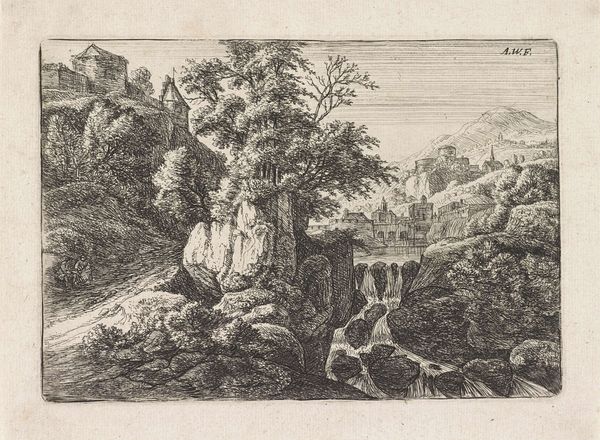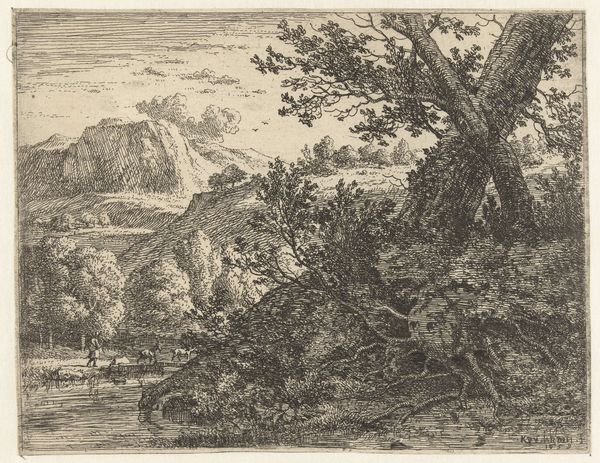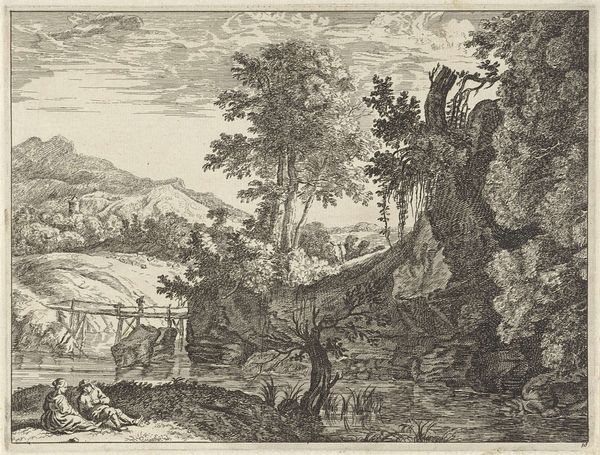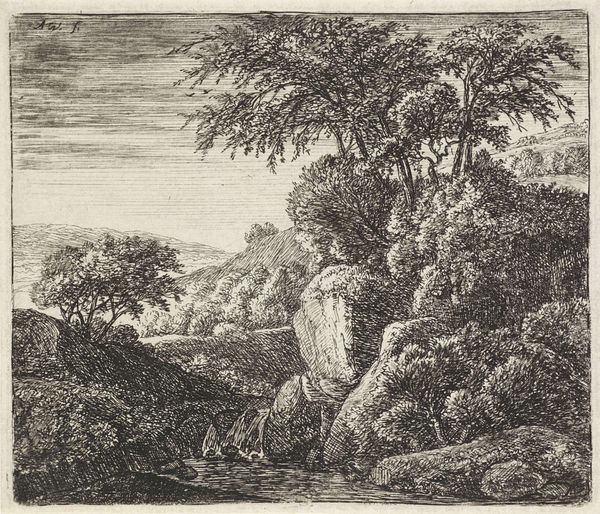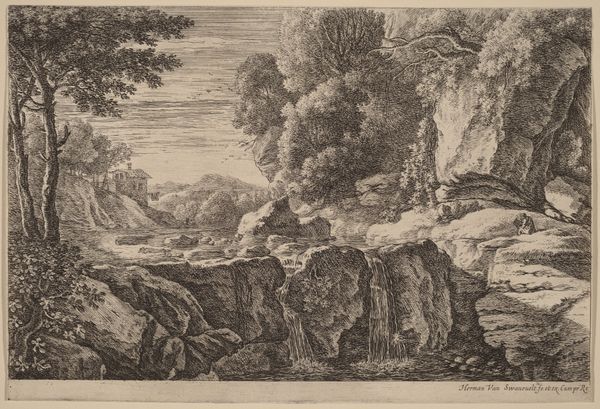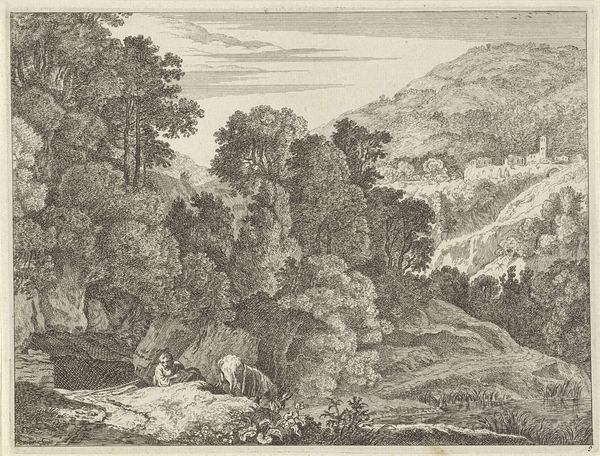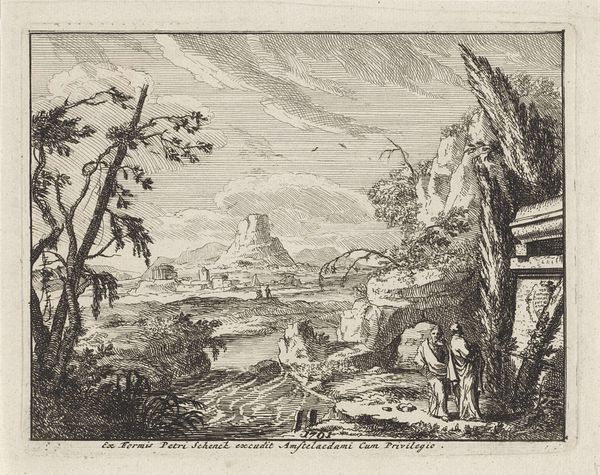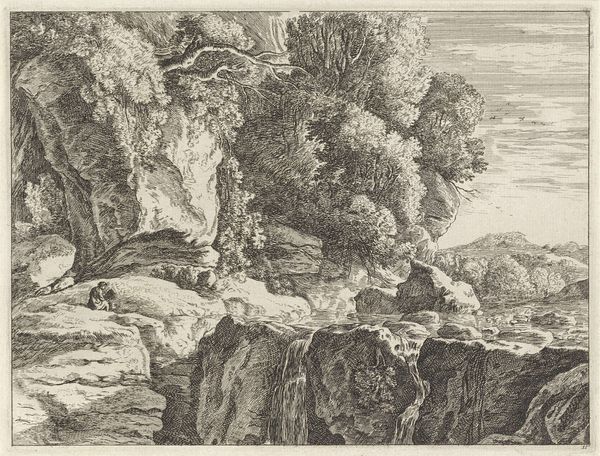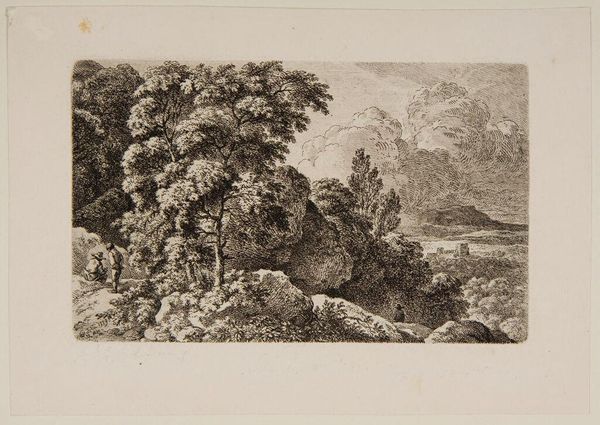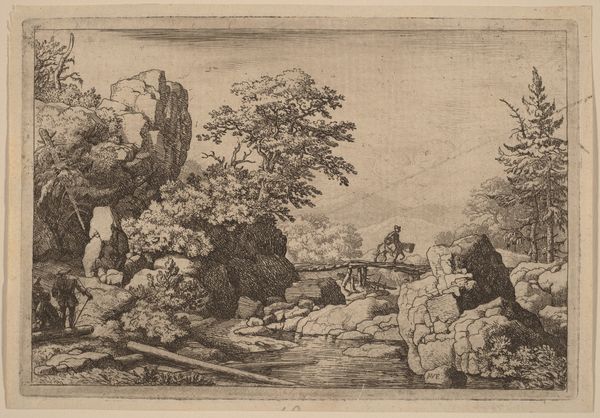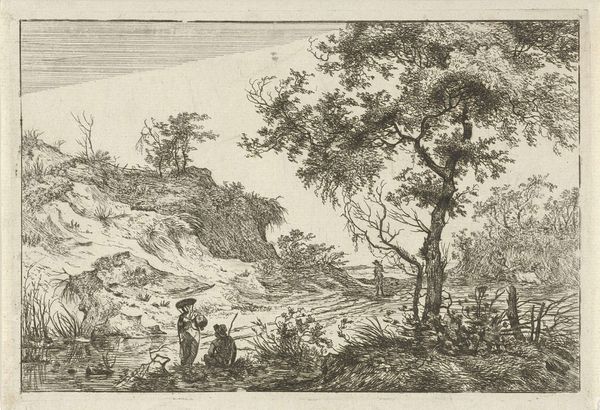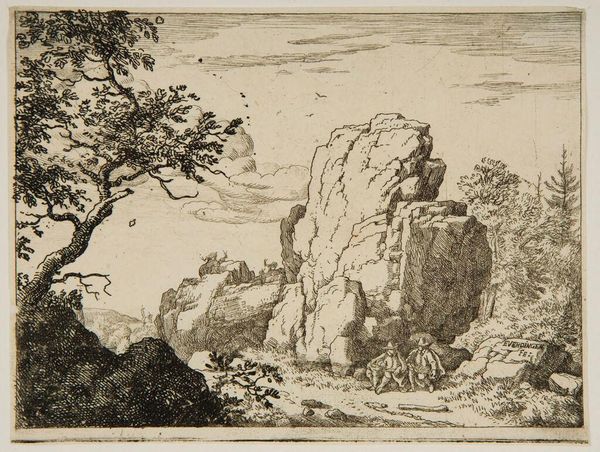
print, etching, woodcut
#
baroque
#
dutch-golden-age
# print
#
etching
#
landscape
#
waterfall
#
river
#
woodcut
#
line
#
realism
Dimensions: height 115 mm, width 167 mm
Copyright: Rijks Museum: Open Domain
Editor: So, here we have Anthonie Waterloo’s "Double Waterfall," an etching dating sometime between 1630 and 1717. It’s a Dutch Golden Age landscape, rendered in incredibly fine lines. I’m struck by its tranquility – even with the cascading water. What do you see in this piece, beyond the immediate subject matter? Curator: I see a longing for connection with the natural world, something palpable throughout the Dutch Golden Age. Notice how the trees frame the falls, inviting the viewer into a space both powerful and serene. The double waterfall itself, though seemingly literal, functions symbolically. Water, in many cultures, represents purification, change, and the subconscious. Do you see how this might relate to the cultural memory of the time? Editor: I guess… were people looking for a way to cleanse or change things up, through connecting with nature? Curator: Precisely! Consider the Netherlands' history of land reclamation, battling the sea itself. This image subtly suggests humanity's power, but also our inherent smallness when faced with the enduring forces of nature. The delicate lines and almost reverential portrayal signal a deeper respect, perhaps a psychological need to reconcile dominance with humility. The 'double' nature of the waterfall speaks to the dualities within us and the world: power and peace, control and surrender. It also can be linked to realism in Dutch Golden Age as Dutch artists tried to record world as accurately as possible in the early age of science, so it is important both as cultural document and psychological record. Editor: That's a great point. I hadn’t considered the cultural connection to water itself. Thinking about those lines differently now – seeing that tension between control and freedom. Curator: Indeed. Landscape isn't just scenery. It’s a mirror reflecting our inner landscape, fears, and aspirations. Seeing these symbols within our surroundings enhances our experience and unlocks historical narratives and deep seated truths, don't you think? Editor: Absolutely. I'll definitely look at landscapes in a new way from now on.
Comments
No comments
Be the first to comment and join the conversation on the ultimate creative platform.
